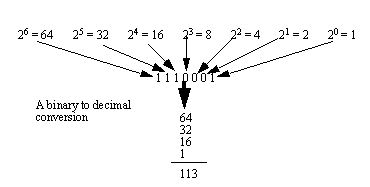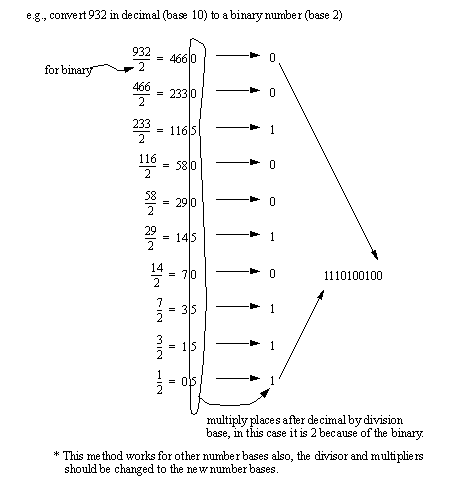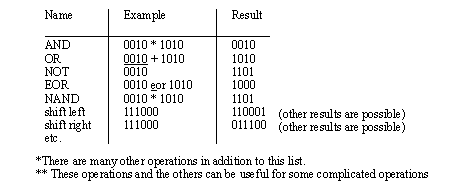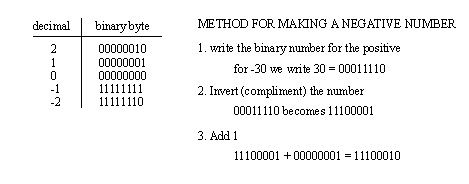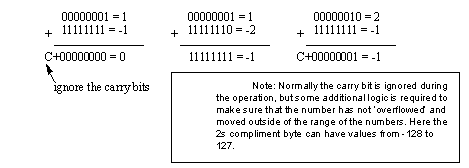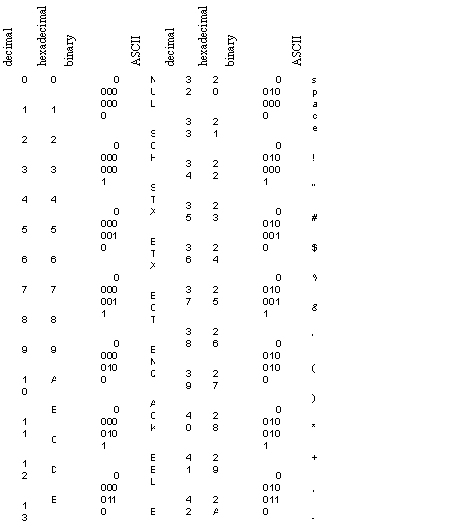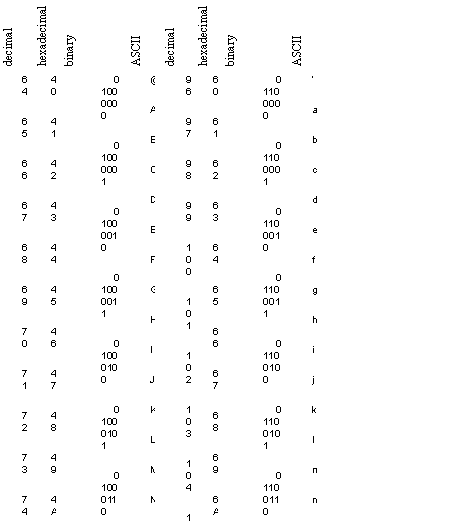1.2 DATA VALUES
1.2.1 Binary
• Binary is best used in computers because signals are ON/OFF which is well suited to the two binary digits.
• Converting between number systems can be done by looking at digit magnitude.
• Conversion can also be done between systems by division.
• For division use remainders.
• Convert the following numbers to/from binary
• Binary bytes and words are shown below.
1.2.2 Boolean Operations
• In most discrete systems the inputs and outputs (I/O) are either on or off. This is a binary state that will be represented with,
1 = on
0 = off
• Because there are many inputs and outputs, these can be grouped (for convenience) into binary numbers.
• Consider an application of binary numbers. There are three motors M1, M2 and M3
100 = Motor 1 is the only one on
111 = All three motors are on
in total there are 2n or 23 possible combinations of motors on.
• The most common Binary operations are,
1.2.3 Binary Mathematics
• These include standard logic forms such as,
- and/or/add, etc.
- compliments
• Negative numbers are a particular problem with binary numbers. As a result there are two common numbering systems use,
- signed binary - the most significant bit (MSB) of the binary number is used to indicate positive/negative
- 2s compliment - negative numbers are represented by complimenting the binary number and then adding 1.
• Signed binary numbers are easy to understand, but much harder to work with when doing calculations.
• An example of 2s compliments are given below,
• When adding 2s compliment numbers, additional operations are not needed to deal with negative numbers. Consider the examples below,
1.2.4 BCD (Binary Coded Decimal)
• Each digit is encoded in 4 bits
• This numbering system makes poor use of the digits, but is easier to convert to/from base 10 numbers. For the two bytes above the maximum numbers possible are from 0-9999 in BCD, but 0-64285 in binary.
• Convert the BCD number below to a decimal number,
• Convert the following binary number to a BCD number,
1.2.5 Number Conversions
• Convert the following binary number to a Hexadecimal value,
• Convert the following binary number to a octal,
1.2.6 ASCII (American Standard Code for Information Interchange)
• While numbers are well suited binary, characters don’t naturally correspond to numbers. To overcome this a standard set of characters and controls were assigned to numbers. As a result, the letter ‘A’ is readily recognized by most computers world-wide when they see the number 65.
